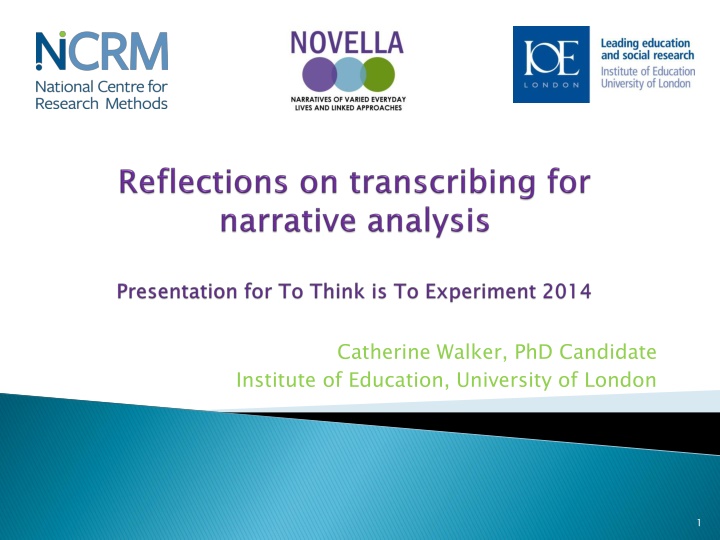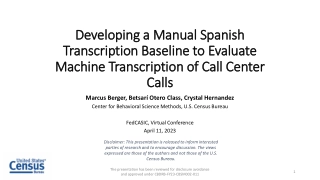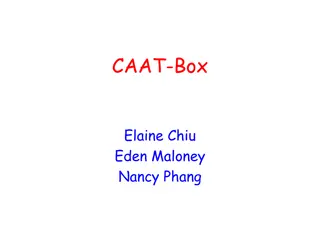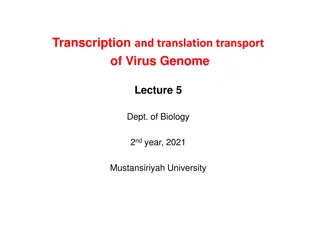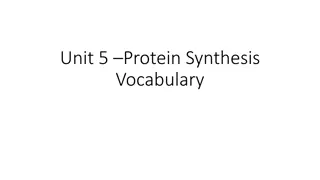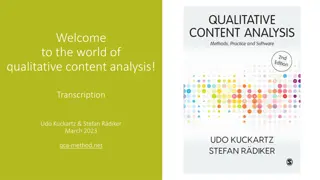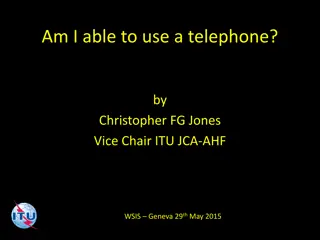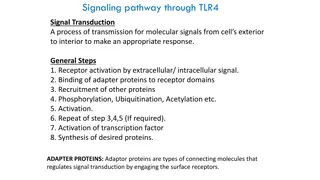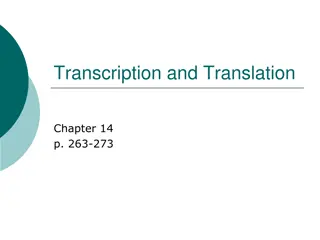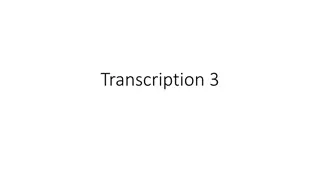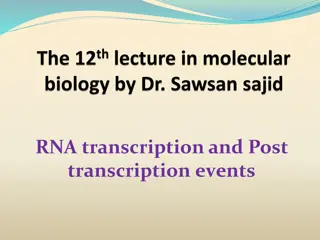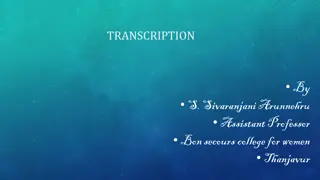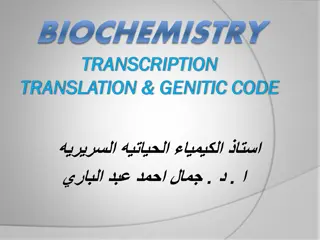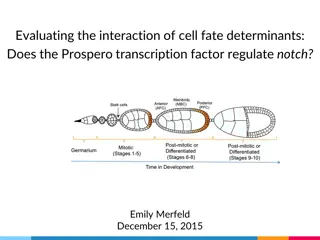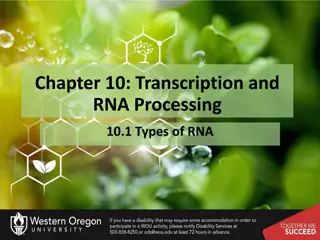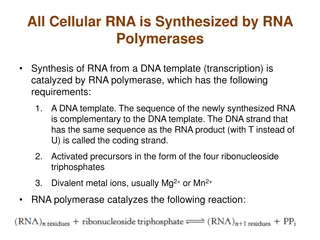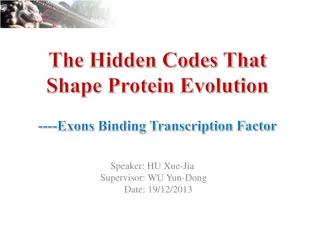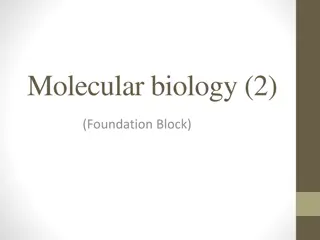Transcription as a Theory-Laden Process
Recent research explores the theory-laden, emotional nature of transcription, emphasizing its role as a powerful act of representation within data analysis. The study delves into children's everyday experiences and practices in different environments, shedding light on the intricate interplay between their lives and surroundings.
Download Presentation

Please find below an Image/Link to download the presentation.
The content on the website is provided AS IS for your information and personal use only. It may not be sold, licensed, or shared on other websites without obtaining consent from the author.If you encounter any issues during the download, it is possible that the publisher has removed the file from their server.
You are allowed to download the files provided on this website for personal or commercial use, subject to the condition that they are used lawfully. All files are the property of their respective owners.
The content on the website is provided AS IS for your information and personal use only. It may not be sold, licensed, or shared on other websites without obtaining consent from the author.
E N D
Presentation Transcript
Catherine Walker, PhD Candidate Institute of Education, University of London 1
Recent body of literature that argues that far from being a straightforward behind-the-scenes task, transcription is a theory-laden, interpretive and emotional process, a powerful act of representation (Oliver et al, 2005) which is part of the analysis itself. See final slide for references. 2
Childrens everyday experiences, understandings and practices of the environment in two countries. Multi-method research with fifteen 11-14 year old children in Southern England and Andhra Pradesh, South India, working with each family over a two week period. Concern with how children s everyday lives and the environments they inhabit impact upon one another. Linked to NOVELLA: Narratives of Varied Everyday Life and Linked Approaches, three year research node funded by the National Centre for Research Methods (NCRM) and hosted by Thomas Coram Research Unit, Institute of Education (www.novella.ac.uk) 3
All data generated with colleagues: Natasha Shukla and Madhavi Latha (India) and Janet Boddy, Helen Austerberry and Hanan Hauari (England). All research activities carried out in and around the family home or children s school and audio-recorded. Activities conducted in Telugu or Hindi in India were simultaneously interpreted by Madhavi Latha. 4
"[...] transcription serves the purpose of taking speech, which is fleeting, aural, performative, and heavily contextualised within its situational and social context of use, and freezing it into a static, permanent and manipulable form [...] A written text can be operated on analytically. It can be quoted, stored, copied and inspected. (Lapadat, 2000, p.204) 5
Catherine: Ok, so did they was it just one time when everyone in the family got fever or was that quite regular? Madhavi prevailed and due to them every one at home fallen sick, was it frequent and high, or else it happened only once during that time? Mamatha Madhavi: It s quite regular (.) [For all the members = Catherine: = Mmm, mmhmm, mmm.] And has that happened at all since the park has been cleared up? Madhavi occurring? Mamatha Madhavi reduced, [why happening again= Mamatha Madhavi Mamatha Madhavi because even in the park, though the garbage everything was taken out and was made into the park, the children of that locality will go there and take up their uh, excretion all that there itself (C: Mmm) urine, toilet, all this, in the surroundings of that park. Catherine: Mmm Madhavi: Previously there was all dirt, when there was no park and lot of mosquitoes prevailed and due to them every one at home fallen sick, was it frequent and high, or else it happened only once during that time? Mamatha: Happened many times : Previously there was all dirt, when there was no park and lot of mosquitoes : Happened many times Madhavi: Now they have built the park, and the park is cleaned, even now are they occurring? Mamatha: Occurring Madhavi: Why it s happening, even after building it, now the mosquitoes should be reduced, [why happening again= Mamatha: = Little bit reduced Madhavi: [Ah! = Mamatha: = Little children], that s why it happens. Madhavi: Happens again? : Now they have built the park, and the park is cleaned, even now are they : Occurring : Why it s happening, even after building it, now the mosquitoes should be : = Little bit reduced,] : [Ah! = : = Little children], that s why it happens. : Happens again? Still the problem exists that is, fever continuation is there, ,] but everyone uses it as toilet, that s why! but everyone uses it as toilet, that s why! Madhavi: Due to that the mosquitoes prevelance is still [existing = Catherine: =Ok] Madhavi: So that s the reason why they still have the fever. 6
Translated talk Original language talk (.) ( ) A : Talk [talk talk = B: = talk talk] talk (A laughs) (B laughs) (both laugh) (telephone rings) - Repeated letters: word (talk talk talk (softer)) (inaudible) ( it was disgusting ) Translated talk Mark translated talk in bold Transcribe original language talk in plain type Just noticeable pause (i.e., less than approx. 3 seconds duration) Longer pause (i.e., more than approx. 3 seconds duration, but not timed) Equal signs on adjacent lines denote the start of overlapping talk. Square brackets [ ] should be used to show where the overlap starts and stops participant laughs researcher laughs researcher and participant laugh Any audible and recognisable background noise A cut-off in speech e.g. It was dis- I don t know why that was. The speaker has stretched the preceding sound. For example It was diiiiisgusting! Underline speech/sounds that are louder than usual or strongly emphasised. Mark with brackets speech/sounds that are softer than usual e.g., whispered. Can do the same with faster and slower speech. Inaudible Speech Put in brackets any guess at what might have been said if unclear. 7
This has made me aware first hand of the interpretive work involved in transcription. To present decisions made in the transcription process as only those which are conscious, reflexive and proactive is to gloss over the multiple interpretive decisions made by individual transcribers, including myself, in constructing a transcript. As I have become aware through my own involvement, these are often taken unconsciously, un-reflexively and reactively. 8
c.walker@ioe.ac.uk @c_l_walker http://www.novella.ac.uk/about/1056.html 9
Davidson, C. (2009). Transcription: Imperatives for qualitative research . International Journal of Qualitative Methods 8 (2). Duranti, A. (2006). Transcripts, like shadows on a wall . Mind, Culture and Activity 13 (4). Green, J., Franquiz, M. and Dixon, C. (1997). The myth of the objective transcript: Transcribing as a situated act . TESOL Quarterly. Lapadat, J. C. (2000). Problematising transcription: Purpose, paradigm and quality . International Journal of Social Research Methodology 3 (3). Lapadat, J. C and Lindsay, A. C. (1999) Transcription in Research and Practice: From Standardization of Technique to Interpretive Positionings . Qualitative Inquiry 5 : 64. Ochs, E. (1979). Transcription as theory. In E. Ochs and B. B Schiefflin (Eds.), Developmental pragmatics (pp. 43 72). New York: Academic. Oliver, D. G., Serovich, J. M. and Mason, T. L. (2005). Constraints and Opportunities with Interview Transcription: Towards Reflection in Qualitative Research . Social Forces 84 (2). Tilley, S. A. (2003). Challenging'' Research Practices: Turning a Critical Lens on the Work of Transcription Qualitative Enquiry 9: 750. 10
